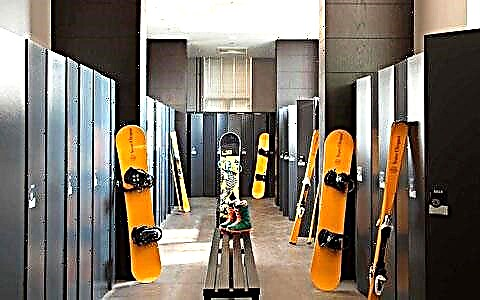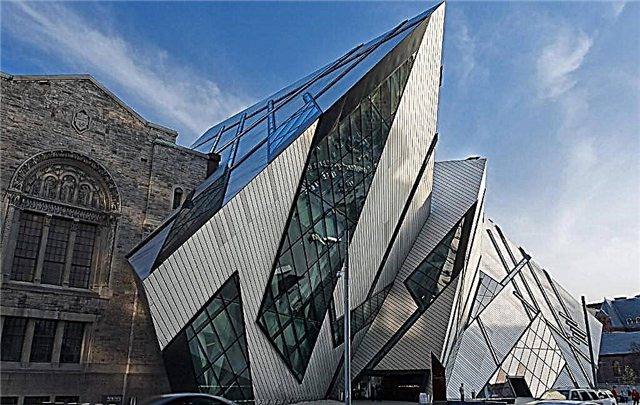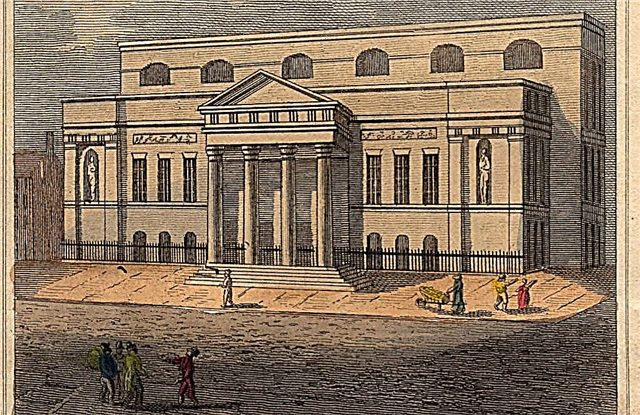If museums are a cold testimony to the historical events of China, then the parks of Beijing can show the real life of the Chinese, full of pleasant surprises for the tourist who first encounters the five thousand year history of this country, and the best of them are described below.
Peace park

In 1993, the Beijing government allocated an impressive amount for the establishment of a cultural center that brings together dozens of famous architectural and natural attractions from 50 countries in the open air. To accommodate them, an area of more than 46 hectares of land was required. It will take a lot of time for a detailed study of all the miniatures, it may even take a whole day, so tourists who have planned other entertainment on this day are offered electric cars for $ 15.
Every day from 8:00 to 17:00 hundreds of tourists come here and it is almost impossible to take good pictures without the presence of unauthorized persons, but on weekdays there are more chances. A ticket costs $ 15, and it fully justifies its cost, because if some attractions look "toy", then Niagara Falls, the Capitol, the Eiffel Tower are quite impressive in size and worked out to the smallest detail.
Beihai park

A serene lake, sophisticated gardens and an abundance of Buddhist temples and pavilions occupy 68.2 hectares - the territory of the imperial lands is so large that a large flow of tourists is lost in their surroundings, and the noise of voices is obscured by the sounds of the surrounding nature. Surprisingly, there is always a haze over the lake, and on the islands themselves, connected by long ornate bridges, there is some kind of mysterious, mesmerizing with its tranquility, atmosphere that visitors involuntarily fall silent and succumb to this general serene mood.
The panorama of the city opens from the top of the Jade Island, and you can reach it on foot, or you can take an authentic oriental-style ferry for a fee. It is here that most of the religious buildings are concentrated, which are still revered and of great importance for the Chinese - the statues of Buddha and bodhisattvas are surrounded by candles, offerings and money. Entrance costs from $ 1 to $ 3, depending on the number of desired places to visit, and Beihai takes place all year round from 6:00 am to 8:00 pm.
Happy Valley Amusement Park

If anything can compare with the famous Disneyland, it is Beijing's Valley of Happiness, which owns about 130 attractions. If you are not a fan of thrills, then it is better to save twice and buy a "night" ticket at a price of $ 18, when the most extreme attractions are closed, the rest of the time the ticket price is $ 33 for adults, $ 22 - for children from 1, 2 to 1.5 meters, and free for seniors over 69 and children up to 1.2 meters.
A pleasant bonus in the foreign world of entertainment will be a map - a guidebook in Russian. "Extreme Rusher" and "Crystal Wing" are the most popular high-speed slides that rush at a speed of 135 km / h between the walls and caves of the Ant Castle, creating the feeling that you are about to fit into the opening and fly out of the chair. "Happy Valley" is divided into several thematic zones, decorated under the era of Ancient Greece or the Mayan civilization, where breathtaking performances with tomb robbers, volcanic eruptions and a host of other performances are held that cannot be seen in a day, even considering that the entertainment center works with 9:00 am to 10:00 pm.
Jingshan Park

About 1000 years ago, Jingshan Mountain was formed here, which means "View from the mountain". Indeed, this place is remarkable for its landscapes, opening from its five peaks from a height of 50 meters above ground level. From here you can also see the Forbidden City and Beihai, as well as the Xishan and Xiangshan mountains. The path to the peaks lies through thorny cypress alleys and flower beds, and on each of them there are pavilions with statues of Buddhist deities cast from copper, and among the thickets of the "weeping" Chinese sophora there is one known for the story of the suicide of the last emperor of the Ming dynasty - Chongzhen.
In 1644, during a peasant uprising, the emperor could not escape, so he hanged himself on one of the trees, and before that he killed his servant, wife and children. In the Hall of Visitation of Virtue, the coffins of the rulers of the Qing dynasty were exhibited before burial, their portraits were kept in the Hall of Imperial Longevity, and the last interesting point of this excursion is the Memorial Arch, on which a plaque with the dictum of the ruler of the Qing Dynasty - Qianlong is suspended.
If you get here on the day of the exhibitions, the ticket price will rise to $ 0.7, the rest of the time the ticket price will be $ 0.3. Opening hours - from 6:00 to 21:00.
Zhitan Park

The tradition of worshiping the Sun and the Moon still exists today, but it was started not by our contemporaries, but even during the Ming and Qing dynasties, who performed the sacrifice ceremony here - they were performed by the emperors personally. The main building of this park complex is the Altar of the Sun, surrounded by a ceremonial red gate with green tiles. In the middle of the altar stands a square-shaped altar representing the earth, and a throne to which stairs with nine steps lead.
During the construction of the altar, everything was accompanied by the symbolism of the sun, and all physical measurements were equal to odd ("solar") numbers. In addition, every day from 6:00 to 21:00 it is pleasant to relax among the man-made rocks, lotus ponds and gazebos, especially since the entrance is free, and there is entertainment for children, including a climbing wall.
Chinese ethnic culture park

Until now, China has managed to preserve all 56 nationalities, exercise rights, honor culture, language and their traditions, despite the fact that they make up only 8% of the total population. Therefore, in 1992, the Chinese government considered it necessary to raise the issue of creating a theme park, and by 2001, work on its improvement was completed. Everywhere there are traditional dwellings of different peoples of China, about 45 ethnic villages, and information about the peculiarities of the culture on the stands near them.
The entire complex impresses with its natural beauty in the form of rocks, waterfalls, lakes with ducks and red and yellow carps that can be fed, flowers and trees, as well as historical sculptures, architectural buildings and performances of folklore groups in folk costumes. The ticket price is $ 13, which also includes a visit to the Museum of Household Items and performances. Opening hours - daily from 8:30 to 18:00.
Olympic Park and National Olympic Sports Center

All travelers strive to get first of all to the square, where there are significant buildings for the Chinese - this is the Bird's Nest, where the opening and closing ceremonies of the Olympic Games, the Torch House, the Linglong observation tower and the Water Cube national swimming complex were held. All buildings are equipped with rainbow-colored lighting, so it's better to come here in the evening, when modern dynamic music is playing, young people are rollerblading, flying kites, toys are sold for children and carousels are open, and sellers come here with small trays of Chinese snacks.
And in the afternoon it is better to visit the underground shopping mall or forest park, which is located on the other side of the square. An alley lined with curious classical Chinese sculptures leads to a lake, mountains and wild cherries. Admission is free, only for an electric car, if you need it, you will have to pay separately.
Wildlife park

On an area of 36 hectares, there are more than 200 species of animals (10,000 individuals) that live in their natural habitat.The panda and rare species of monkeys are very popular, but even with especially large influx of tourists near the enclosures with our smaller "brothers" you will not see crowds. The activity period for animals begins in the morning hours, therefore, it is preferable to make a half-hour trip on a safari bus at this time.
Tigers, lions and other predators will be in the immediate vicinity of you, but they will not be able to harm you, even children are allowed on this type of excursion. Circus shows with elephants, birds and monkeys are also worth visiting, they perform ingenious tricks, and then even allow you to take pictures with them. This place is located near the city center, the ticket costs $ 12 for adults and free for children up to 120 cm. Opening hours: from 8:30 to 17:30, daily.
Old Summer Palace

The construction of the palace began in 1707 during the Qing dynasty, to which only those close to the emperor were allowed. Foreign masters invited by Tsangllong also worked on the exterior of the building, as a result of which the palace was built of stone, and not a tree characteristic of the architectural structures of China at that time.
The summer residence of the emperor turned out to be so beautiful that it was even called the "Versailles of the East". But soon the Second Opium War broke out between the Chinese and the Anglo-French coalition, and an English delegation of 20, sent to negotiate in China, was tortured and killed. The enraged Lord Elgin, commander-in-chief of the coalition forces, dispatched over 3,000 troops to burn down the Summer Palace.
Today, the Beijing authorities provide funds for the maintenance of the imperial gardens and palace, but it was decided to leave the ruins intact to preserve the rich and eventful history of China. Entrance costs $ 5, including the local museum. Opening hours: from 7:00 to 18:00, daily.
Yiheyuan Park

Gardening art of the Celestial Empire is difficult to imagine without reservoirs, and, of course, Yiheyuan was no exception. Here lakes occupy three quarters of the total area of the park of 29 hectares, the largest of which is Kunming (2.2 square meters). The country residence was built by order of Tsanlong since 1750, and after a series of hostilities it was restored and improved in 1888. The main attraction of Yiheyuan is the Longevity Hill and the temple located on it, where Empress Cixi once celebrated her birthdays, the 41-meter Buddha Aroma Tower.
The territory is divided into 3 zones - gardens, imperial chambers and meeting rooms. Among them were a library, galleries, living quarters for servants, a theater and temples. Each of these buildings is accessible for inspection and is rich in personal belongings of the imperial family (furniture, porcelain, manuscripts, household items). Yiheyuan is open from 7:00 to 19:00, but the gardens and halls of the palace have a different schedule, and you have to pay for them separately, while the price of a general ticket is $ 5.
Beijing International Sculpture Park

China spares no land for the cultural enlightenment of its people, and another huge area of 162 hectares was given under two hundred sculptures from 40 countries. Half of them represent the western zone, depicting scenes from the life of ordinary peasants, while the other, the eastern, serves as a place for an exhibition of modern masters, who in turn reflected city life.
In addition to man-made works of art, there are also natural riches - about 5,000 magnolias delight the eye, especially in spring, when their flowering is in full swing. One day is not enough to go around every corner of such a large territory, so bicycles are rented. A symbolic fee is taken for admission - $ 1.5, and the opening hours are from 6:30 to 21:00, daily.
Longtan Park

Ponds with the already familiar golden carp, green spaces, flower beds, stone sculptures, long arched bridges with bas-reliefs, red pagodas with a curved roof and gazebos with three-arched gates are mandatory attributes of Chinese gardens. Longtan is located in the city center and is surrounded on all sides by skyscrapers. From 6:00 to 21:00, it receives residents and tourists of Beijing for only $ 0.3, and therefore you will hardly be able to walk alone, but other advantages appear - to get to know the culture and mentality of the Chinese people better.
In the morning, pensioners gather at the ponds, some play different instruments, others sing (you can even hear the beloved by the Chinese "Moscow Nights"), and even dance, and in the evening whole groups of elderly women bring a tape recorder and, to the sounds of modern performers, perform simple memorized rhythmic movements at the same time to the beat of the music. A great place for a leisurely walk, boating and just beautiful photos.
Chaoyang Park

Chaoyang was opened in the city center relatively recently - in 1984, more focused on youth. It is divided into several zones, each of which has its own theme. The most popular is the Beach Garden, where city music festivals, maritime carnivals by the sea and rock performances are held, and during the Olympic Games, beach volleyball competitions were held here. In the huge green areas, people have picnics, set up tents, play football, basketball and tennis.
There is an amusement park for children, but it is quite expensive - $ 15 per person (for 3-5 carousels), as well as boat and bicycle rental. A pleasant and unexpected discovery for Ukrainians is the monument to the poet Taras Shevchenko, and for Georgians - to the poet Nizami Ganjavi. Chaoyang accepts guests every day from 6:00 to 22:00, and charges $ 0.7 per person.
Xiangshan Park

At the foot of the "Fragrant Mountains" (this is how Xiangshan is translated) is the "Garden of Pleasure and Peace", as it was called under the Emperor of the Qing Dynasty - Tsanlong. At the entrance there is a sculpture in the form of a red leaf, which is the symbol of Xiangshan, which in autumn is simply replete with a riot of colors from gold to crimson. In mid-October, people from all over the capital come here for a photo shoot, and merchants sell souvenirs depicting mountains, namely, the Incense Peak (the highest point of Xiangshan), autumn leaves and the beautiful Yangjing Lake.
There are also historical monuments - the residence of Mao Zedong and the headquarters of the Chinese Communist Party. Among the extreme entertainments, tourists note the fascinating cable car and the ascent to the top of Xiangshan at a cost of $ 7, for the entrance they pay separately - $ 0.3. Working hours: from 6:00 to 20:00.
Yuanboyuan Gardens Exhibition Park

In 2013, at the site of a landfill, Chinese masters of landscape gardening presented a vivid example of how the ecology can be improved by transforming industrial waste into a landscape. Yuanboyuan covers 512 hectares, where modern gardens overlap with traditional ones, including overseas designs. In addition to plants and trees, there are also architectural monuments: a copy of a French palace stretches near the European Garden, and characteristic buildings are also present near the Arab, Iranian and Indian gardens.
Special attention is paid to the gardens of Chinese cities; futuristic designs of Tianjin, Zhuzhou railway, poetic Changde, modern Shenyang, romantic Jiangsu are memorable. It is impossible to get around all the gardens even in a few days, so it is better to set aside a few days to study them. The ticket price is $ 3, and the opening hours are from 7:00 to 18:00.
Daguanyuan Park

For the filming of the popular Chinese television series "Sleep in the Red Terme" in 1984, to the delight of numerous fans of this novel, a park was built with palaces, pagodas and farmland, as it was during the Ming and Qing dynasties. The creation of the project was taken seriously: writers, historians and researchers were invited to accurately reproduce the natural landscapes and living quarters of that era.
Through a narrow passage in a man-made rock at the entrance, winding paths lead to ponds and round arches with romantic names, and then to pavilions where scenes and interiors with the heroes of the Jia family are recreated (and there are about 600 people in the series, 50 of which are played by the main roles).
The rooms of the imperial concubine Jia Yuanchun are the most popular among fans of the historical series. There are several museums of art and culture on the territory of Daguanyuan, but payment for them is taken separately. The general ticket price is $ 3 for students, and $ 6 for adults. Opening hours: from 7:30 to 16:30, every day.
Lianhuachi Park

For the exuberant flowering of lotuses, you should go to Lianhuachi, which is located near the Beijing Railway Station. This place is so old that the locals joke - "First there was Lianhuachi, and then Beijing." In the 80s, part of the ancient ruins was restored (previously it served as a suburban residence for members of the imperial nobility), but in general, it was left untouched and only cleanliness and care are maintained, which takes the funds received from the sale of tickets for admission - 1.5 $.
For more than 3000 years, it has been gathering connoisseurs of natural beauty around it, because in addition to 80,000 water lines in summer, magnolia, acacia and cedar, as well as Chinese pines and flower beds with exotic plants please the eye with their fragrance and flowering. All this natural splendor, fountains, theater, children's carousels fit on 45 hectares of land and is available for a walk every day from 6:00 to 21:00.
Shichahai Park

The history of Shichahai began in the 13th century, when it was used to supply water to Beijing, and then it was completely abandoned. But in 1992 it was cleared and given the status of a historical and cultural area thanks to the numerous Buddhist and Taoist temples located on its territory. In addition, there is the "Northern Residence" of the Chinese government, which was previously occupied by the princes Chun and Gun, the House-Museum of Academician of Sciences and Writer Guo Moruo, as well as Hutongs - picturesque medieval Chinese houses that form entire villages dating back to the era Yuan Dynasty.
Shichahai also contains the narrow pedestrian street Yandai, where you can buy souvenirs, tea, qipao in shops, and try national dishes in small street cafes, but the prices for dishes are quite high due to the high flow of tourists. Free admission.
Taozhanting Park

There are notes about Chinese settlements in this area dating back to the 3rd century BC. BC, but gave the Taozhanting gardens a well-groomed appearance during the reign of the Liao Dynasty (and this is already the 10th century BC). Soon, monasteries with Buddhist columns and pagodas appeared here, and picturesque landscapes began to inspire Chinese poets to write poetry. Taozhanting is located far from the bustle of the city, smog and industrial centers, so clean air, lakes and its vast expanses (an area of 24 hectares) gather many holidaymakers on weekends.
In April, people come here to the festival of flowers and kites, in the hot months of summer - for a boat trip on the cool lake, in other seasons you can see historical sights, including the graves of figures, significant for the history of China - Sai Chingshua, Shi Pingmei, Gao Zhunyu. The ticket price for an adult is $ 0.3, for a child - $ 0.2. Working hours: from 6:00 to 21:00, every day.
Zoo

The largest and oldest zoo in all of China, which has 500 species of animals, including giant pandas and other inhabitants of the Red Book (Chinese salamander 1.8 meters long, red-footed ibis, Amur tigers, golden snub-nosed monkey). Some zones are paid separately, for example, the oceanarium costs $ 24. At the entrance you will be given a card in two languages, including English; there you can see the schedule of performances with the participation of elephants, bears and monkeys, which can be fed later, as well as aquatic ones with sea lions and dolphins (at the end, you can swim with them and take a photo).
Our compatriots also meet among the trainers and artists participating in circus shows. The ticket price is $ 3, but there are great deals, including riding a dragon boat and all kinds of pavilions with animals, for which you have to pay extra with a regular ticket. Opening hours: from 7:30 to 17:00, every day.











